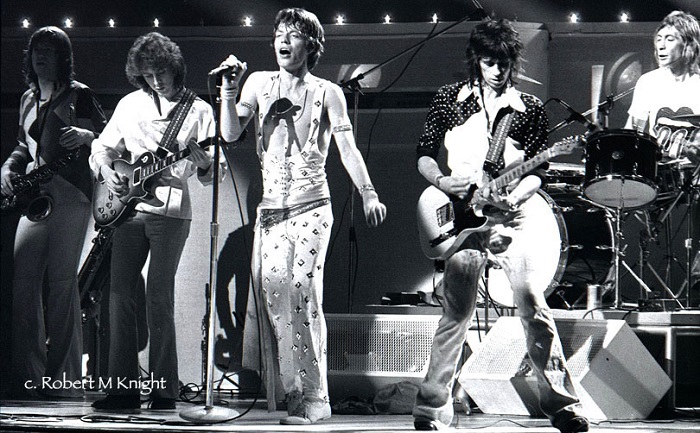
By Meghan Roos
[R]ock ‘n’ roll photographer Robert Knight has been searching for rock’s next guitar god since Stevie Ray Vaughan’s death. One reason behind his mission is the haunting final exchange he had with the blues master, hours before that fatal plane crash in 1990: “If anything ever happens to me, you’ll know me when you hear me,” Vaughan reportedly said. Fifteen years later, Knight’s search has evolved into the Brotherhood of the Guitar, a collective in which Knight mentors young guitarists and introduces them to connections he’s forged over a nearly 50-year-long career in the music industry.
Knight’s photography career officially started in 1968, when he snapped photos of a 24-year-old Jeff Beck at the Fillmore West in San Francisco. In the years that followed, Knight became the first American photographer to travel with Led Zeppelin on their North American tours, shot hundreds of musicians in their prime, from Jimi Hendrix to the Rolling Stones, and became a respected member of the media who earned his subjects’ trust by recognizing when to put his camera away.
All photos by Robert Knight
Knight’s passion for music–specifically the blues–and the friendships he forged with musicians now help the members of the Brotherhood of the Guitar. Knight knows what a guitar hero looks and sounds like, and he knows many people who can help launch artists’ careers. But playing music professionally and becoming a guitar hero on the level of a Jimi Hendrix or a Stevie Ray Vaughan are two very different things, and few guitarists are ever able to make the jump. With the Brotherhood, Knight hopes to nurture a musician who can finally step up to that heroic level.
Despite its ambitious goals, the Brotherhood might not have existed at all without a documentary called Rock Prophecies. The project grew out of the curiosity director John Chester and co-producer Tim Kaiser had in Knight’s career and guitar hero search. “It was hard to believe that this guy had been there for these pivotal moments in rock history,” Chester says. He arranged to meet Knight for lunch in 2006 and, after arriving early, spotted Knight already seated. “He was eating with someone else and I said, ‘Hey, Robert. I’m a little early, I can wait.’ He said, ‘No, no, have a seat.’ I sat down and he goes, ‘John, you know Slash.’ I was like, ‘Okay, this guy knows a few people.’”
Chester began filming shortly thereafter as Knight continued searching for future guitar heroes. All they needed was a skilled youngster to drive the documentary along. In 2007, a Google alert about the Robert Johnson Blues Foundation’s latest New Generation Award recipient gave Knight exactly what he was looking for: a 16-year-old boy with the talent, drive, sensibility and the swagger of a young Stevie Ray Vaughan.
That boy was Tyler Dow Bryant, a guitarist from Honey Grove, Texas who was trying to be just like Vaughan–he even used his three-letter middle name onstage and owned a similar guitar strap. Though initially worried by Bryant’s close impersonation of Vaughan, Knight saw promise. “He was very natural in his ability. It just came oozing out of him,” Knight says.
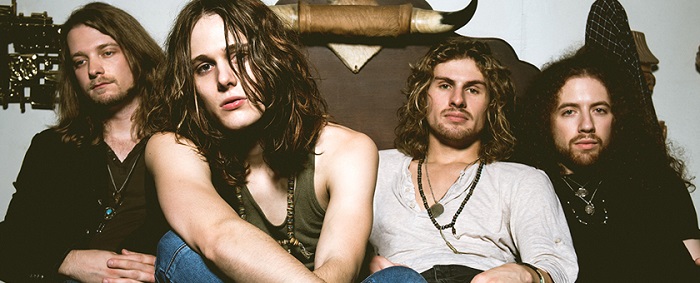
Knight has a way of sounding eager and enthusiastic about every one of his projects, but Bryant seems to be a special case. Eight years later, Bryant’s life is starkly different from the quiet one he led in Honey Grove. Signed to John Varvatos Records (courtesy of an introduction Knight forged between Bryant and Varvatos) with his band, Tyler Bryant and the Shakedown, Bryant is Knight’s prodigy, an artist with the three elements Knight values most: talent, drive and common sense. “He’s got the swagger,” Knight says. “He’s got the chops, he’s got the looks, he’s got all the right niche factors.”
The Rock Prophecies documentary, which also followed Knight’s work with the Australian band Sick Puppies, found critical success upon its 2009 release, scoring awards from the Maui, AFI Dallas and Nashville film festivals. Once the film was available to stream and download through services like iTunes and Netflix, it had an effect Knight wasn’t expecting. “People were moved by the movie,” Knight says. “A lot of families, parents, kids, bands from all over the world reached out to me; mostly guitar players, because they identified with how Tyler went from being some kid in the middle of a small town to meeting people like Jeff Beck and Billy Gibbons.” Knight began receiving hundreds of emails from aspiring musicians, all of whom asked for his help. When John Chester heard about the emails, he had an idea.
“I don’t think Robert realized what he was doing,” Chester says of Knight’s mentorship. “We [Chester and Kaiser] encouraged him to keep trying to find young guitarists. He had this great gift, wealth of experience and contacts to make dreams come true for the right people.”
Chester’s suggestion slowly morphed into the Brotherhood of the Guitar. Co-founded by Knight and Jim Evans, a poster and web design artist who designed the Brotherhood logo with rock mythology in mind, the Brotherhood is sponsored by Guitar Center and Ernie Ball and currently houses nearly 100 budding guitarists. With a target age range of 12 to 20, the collective focuses on finding the boy or girl genius that can revive the guitar’s presence in the music world. “It’s too easy now for a kid to avoid learning to play guitar: they can go to Guitar Center, buy a box and make music tonight,” Knight says. “It has a lot to do with instant gratification. Younger kids don’t want to take the two to eight years it takes to be good on a guitar.”

Even so, some kids are still willing to make the effort. When he’s deciding to offer Brotherhood membership to a musician, Knight looks for talent and persistence. “If somebody’s 13 and I can see what they’re going to become, that carries more weight than someone who’s 22 sending me an okay video. I’m more judgmental of the 22-year-old than I’m going to be of the 13-year-old.” The only real membership requirement is to use Guitar Center and Ernie Ball instruments and supplies, which the companies provide at discounted prices or for free.
Knight also wants his players to pursue musical careers and make the most of his connections. Before the Brotherhood, Knight matched Bryant with Jeff Beck and Quinn Sullivan, a 16-year-old from Massachusetts, with Buddy Guy. Now that the collective is established, he also tries to group Brotherhood members together when they are geographically close. “These guys usually have no one their own age to play with,” Knight says. “I try to help them find other young people in their neighborhoods. A good example is the young artist I manage, Lyric Dubee. I was able to pull from my Brotherhood and put a band together around him. Then there’s Amanda Hardy, an emerging artist out of Seattle. I put her band together just by pulling guys from the Brotherhood.”
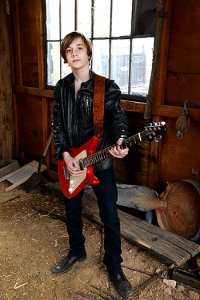
Hardy, 19, recently began recording her debut album with the Grammy nominated producer Warren Huart and credits Knight with expanding her professional network. “He helped me get a connection with Yamaha, who now endorses me,” Hardy says of Knight. “He helped me get a producer. He introduced me to so many people, friends and connections I never would have had without him.”
Dubee, a 17-year-old guitarist from Ontario, Canada, is another Knight protégé who has released four albums to date and recently toured in China and Japan. Playing what he calls “revolution rock,” an amalgamation of his favorite genres from rock and metal to jazz and blues, Dubee’s career goals align with those of most Brotherhood members. “My number one goal has always been to play music for the rest of my life,” Dubee says. “I would like to be a touring and performing musician.”
Knight looks for talent across all genres when searching for new artists. His latest Brotherhood addition is Beamer Wigley, a 13-year-old from British Columbia who idolizes country musicians like Keith Urban and Brad Paisley. After connecting with Knight on Facebook a year ago, Wigley accepted an invitation to join the Brotherhood in November. “[Knight] expanded my knowledge, not just of the country industry but the rock and blues industries,” Wigley says. “I’ve already met many amazing guitar players.”
While Knight and Chester believe a new “guitar god” could emerge at any time, others weigh the issue cautiously. “If a Jimi Hendrix came along right now, would he end up being lost?” Evans wonders. “Probably. I’ve always worshipped the guitar. The Brotherhood brings a lot of talent to the fore, and those guys really have a lot of fun with it. There are certainly times and places where people want to go and see that music, but a guitar hero on a big pop cultural level? I don’t think it’s possible.”
Meanwhile, Knight recognizes the difficulties today’s artists face–especially those in his Brotherhood. “You have to win the lottery more than once,” Knight says. “Labels no longer sell millions of copies [of albums]. They can’t afford to spend two million to break an artist.” Creating distinct identities is one of the ways Knight believes his mentees can stand out. “If I shot the guitar player from Muse, Coldplay or Imagine Dragons and put them on the outside of a Guitar Center, nobody would know who they are. The last guitar hero is Slash. You could put his shadow up and people know who he is. That was always my goal: to give these kids a sense of identity, a sense of swagger.”
Knight has helped make successful musicians out of Bryant and Dubee and believers out of Rock Prophecies viewers, but he hasn’t yet made a real “guitar god.” But projects like these take time, and Knight is patient. He doesn’t mind that some Brotherhood members join backing bands instead of pursuing solo careers, that others worship Keith Urban over Stevie Ray Vaughan or even that some turn out to prefer drumming to playing guitar. (He actually has a similar drummer-centric project in the works, called the Drummerhood.) Knight views the Brotherhood as an aide for whatever the artists need, a “one-stop place” for the industry to discover new talent. “The business is full of obstacles,” Knight says. “My goal is to knock down some of the barriers for these kids. I can open the door, but they have to walk through it. They’ve got to close the deal.”
As the new year begins, Knight is excited by his current roster of Brotherhood members and by the idea of talent around the world that has yet to be discovered. “I’ve got an entire army of young boys and girls that are going to be guitar players,” Knight says. “It’s great to watch.”














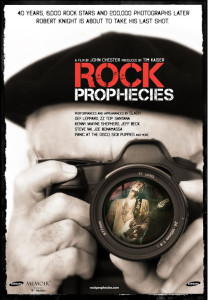

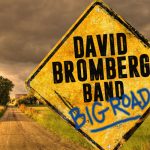

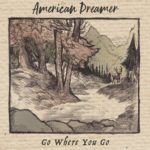
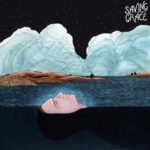

Looking for a Guitar God? …. Look no further than James Bell